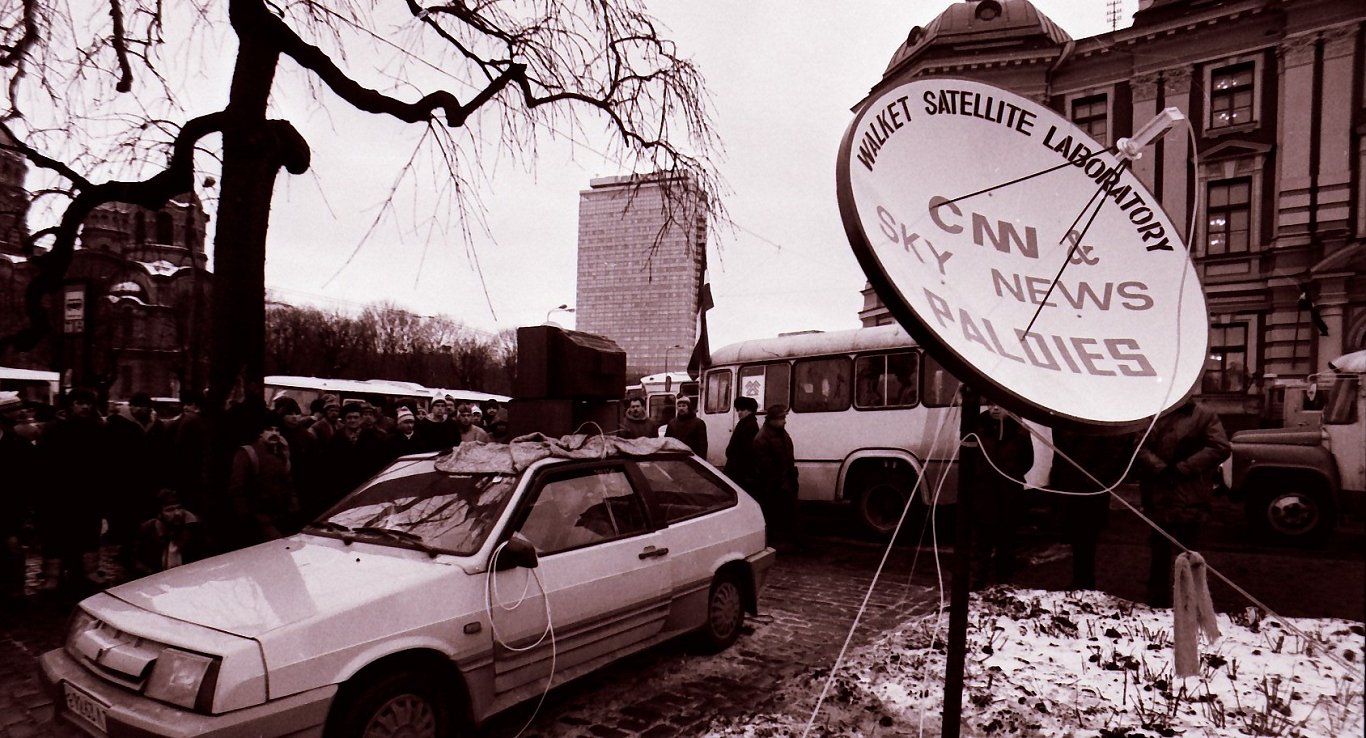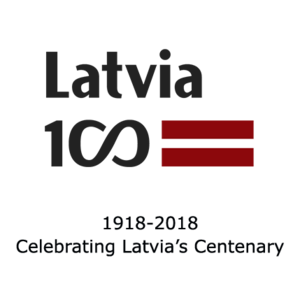“Soviet ‘black berets’ storm Riga police HQ”, “Soviet forces seized the Ministry of Interior of Latvia”, “Barricades Helpless against tanks” — such headlines were read just 30 years ago in “The Guardian”, “The New York Times”, “The Washington Post” and other influential foreign newspapers. CNN, the BBC and other world television and radio channels also reported on the ongoing events in the Baltic States and Latvia. In the efforts of the Baltic States for independence, the informational support was very important, as were the demonstrations in support of Baltics which took place in the States, Australia, Canada, Britain and elsewhere in the world.
How foreign media reported on the Barricades in Latvia
In order for foreign media to receive the most up-to-date, accurate and exhaustive information possible, the work of the Press Centre of the Supreme Council of the Republic of Latvia, as well as the activities of exiled nationals abroad, was of great importance.
On January 20, thirty years ago, in the Latvian news survey created by Maija Ķuze on Canadian radio, the feeling of expectations was mixed with a great deal of excitement. Maija Ķuze reported the difficulties the press in Latvia was experiencing as the Press Building had been taken over by the OMON days of press spending in Latvia, about the demonstration in support of the Baltics at the American Embassy in Toronto, as well as January 13 manifestation in Rīga, Daugavmala, with 600 000 people participating.
Unfortunately, there was also news of bloodbaths coming from Latvia. An excerpt from the radio broadcast: ‘Last Wednesday, January 16, the news received report from Riga that the life of the first victim – the 39-year-old motorist Roberts Mūrnieks – has been claimed in the freedom fight against the occupants. He was killed in Vecmīlgrāvis, shot in the back of his head.
The bloodiest day of the barricades was 20 January, when the OMON attack on the Ministry of Interior took place, killing five and injuring 11 people.
On the evening of January 19, there were rumors that in Latvia was taken over by the pro-USSR All-Latvian Public Rescue Committee, and that Anatolijs Gorbunovs was no longer the Chairman of the Supreme Council. In order to dispel the unfounded rumors, the foreign journalists needed visual evidence.
“Gorbunovs had already issued a statement that nothing had changed. But they insisted it wasn’t enough. We need – especially for television and photographers – to have Gorbunovs come to us and thus show that he is really in his office and in power. Then we went to Gorbunovs, he said – nonsense, I am here – but we persuaded him.
“I wrote a few sentences in English, which was translated into correct Latvian by interpreters, and he came out of the office, read out, and it was a way to show that he was in place to fight disinformation from Moscow,” said Inese Birzniece, who at that time worked at the Supreme Council Press Center.
There was a strong requirement for foreign media journalists to publish only very carefully verified information.
Ieva Lešinska, who worked at the time in ‘Radio Free Europe’ in Germany, Munich, recalls that, whatever the current news about Latvia came in, two independent, authoritative sources needed approval.
As events in the Baltic States escalated, ‘Radio Free Europe’ provided additional transmission time for news in Latvian. Ieva Lešinska volunteered to be on the news, days and nights following tapes and other news sources available at the time, reading the press in English, German and Russian.
Mostly it was very depressing, said Lešinska: “If you are from Latvia and you know how the Soviet system works, and then you read all sorts of nonsense in the foreign press and you feel (especially at the beginning) that people simply don’t understand what is happening, what they want, why they do it… It’s a perestroika, it’s good Gorbachev… Well, gradually it began to change, and of course the events in Vilnius were one of the main milestones in changing attitude.”
Ojārs Kalniņš,who worked at the Latvian embassy in the US, said that the interest in the Baltics and Latvia in America was great enough at the time, which had already been promoted by the Baltic Road in 1989:
“It was that moment when American journalists realized that something serious was happening here. Then they began to follow, and they started to travel to Latvia. Our job was to inform them about the events. The journalists knew we had direct contacts with both the government and the Ministry of Foreign Affairs. It gave them more opportunity to trust us,” said Kalniņš.
The events of Latvia were followed by ‘The Washington Post’, ‘The New York Times’, also by ‘The Times’ and ‘Newsweek’. “We also collaborated with radio ‘Voice of America’, which sent the information back, also with American public radio. CNN television was interested in us, and came even with cameras,” said Kalniņš.
Ojārs Kalniņš said that it is difficult for him to understand how, with the distance, time, how such a speedy exchange of information could be done at the time with such primitive technologies, because there was no Internet, no e-mail, no mobile phones.
It seems unlikely now that, for example, the shootings on 20 January were reported to the United States within 15 minutes. The Baltic theme was elaborated very widely in foreign media, which played a very important role on the road of independence efforts of the Baltic.
An overview of the Barricades events is available on the Defense Ministry website, and we have different stories on LSM, too.
 Facebook
Facebook






